David Ellingsen
I really love conducting these interviews with such an incredible array of talented photographic artists. I cannot express how much I have personally learned along the way. I try and stay open to work and processes that are not always in my wheelhouse, so I’m occasionally inquiring about things that I know nothing about, but I am genuinely curious. Then there are times I get to collaborate on an interview with someone that I am a massive fan of and am admittedly a little extra excited about. This discussion is one of those, and I am thrilled to say this interview with David Ellingsen has me quite spellbound.
I’m happy to take an interview I started over at One Twelve Publishing for my Traverse column, and stop by here to extend it into a full-length one where we get to bring up not just a few more bodies of work from David but look at the overall aesthetic that he has built for himself. David has found myriad ways of developing his collections of photographs, using whatever appropriate means, to help illustrate the effects of climate change and allow us to grasp better the fundamentals of conservation and the constantly degrading landscape. I have been interested in this for a while, but David knows his stuff so well and has taught me so much more with his imagery. He also directs us to some possible moves to help humankind take an active role in preventing the downward direction we are on, hoping that we might better things for future generations. It’s a noble cause and one that he does with creativity and intention. So with these thoughts in hand, please take some time to absorb the work and creative process of a photographer who wants to illustrate these concepts and move forward with making positive changes.
Installation 3, Lance-tooth Crosscut Saw, from The Last Stand
Bio -
David Ellingsen is a Canadian photographer creating images that speak to the relationship between humans and the natural world. He works predominantly in long-term, cumulative projects with a focus on climate, biodiversity, and deforestation.
Ellingsen lives and works in the Pacific Northwest with a place-based practice formed by the landscape he grew up in. His photographs are made primarily between his home in Victoria and the island of Cortes, where he was raised, 150 miles to the north. Since arriving as that island’s first immigrant settlers in 1887, five generations of his family have resided on these traditional, unceded territories of the Klahoose, Tla’amin, and Homalco First Nations.
Intersections form a foundation of Ellingsen’s practice – intersections of observer and participant, archivist and surrealist, documentary photography, and contemporary art. He is interested in the craft of this most restless medium and utilizes a wide range of technical means across the projects.
Ellingsen’s photographs are part of the permanent collections of the Chinese Museum of Photography, South Korea's Datz Museum of Art and Canada's Beaty Biodiversity Museum, and Royal British Columbia Museum. They have been shortlisted for Photolucida's Critical Mass Book Award, appeared with National Geographic, and awarded First Place at the Prix de la Photographie Paris and the International Photography Awards. In his earlier years, Ellingsen was a freelance assignment photographer, eventually shooting for clients such as the New York Times Magazine, Business Development Bank of Canada, Canadian Medical Association, Oprah Winfrey Network, People magazine, and CBC Radio Canada.
Interview -
Michael Kirchoff: I'm delighted to expand upon the interview we started over at my column for One Twelve Publishing a couple of months ago. Before we dive into your work and process, I'd like to know a little about what got you started in the photographic arts. Where and when did it begin for you?
David Ellingsen: Based in Vancouver, I had been shooting assignment work, mostly for advertising and editorial clients, for almost 10 years. Then, as my 30s were rapidly coming to a close, I thought deeply about the time left in my working life and how I wanted to spend it. I could think of nothing more important than contributing to the attempt to slow the destruction of the natural world. I began to move in that direction, accepting fewer assignments and using that time on my own projects, releasing my first “serious” collection in 2009 with Future Imperfect (later to be part of Solastalgia). I went to Photolucida’s Portfolio Reviews with it that same year (in fact, before it was even complete) and was fortunate to be offered exhibition space in China’s Lishui International Photography Festival, an experience which confirmed and made easier this new direction.
MK: What is the one thing you wish you knew when you started making photographs?
DE: The value of patience, or giving the work the time it needs. The more I give a project space to come to its own conclusion the better it is.
MK: What is it that you get out of creating photographs? Is there an overriding theme in your work that you feel best represents you as an artist?
DE: Let me count the ways!
The element of photography that I attempt to align myself with most strongly is the idea of bearing witness – an aspect of the medium since its inception. Photography seems to assist me in seeing the world as it is, not how I wish it to be, and consequently a feeling of living in truth.
On a practical level, I come from a proud working-class family and seem to have inherited an interest in craft, materials, and making objects of good quality. Consequently, I derive a lot of satisfaction in using the many tools of this constantly evolving medium and creating well-made, well-presented work.
I also constantly immerse myself in the many incredible projects out there, giving me a sense of community and connection with not only other photographers but also those folks who work within the wider industry – the exhibitors, the critics, writers, and so on.
At its core, my photography practice simply grounds me in what I feel is a meaningful life. I feel exceptionally fortunate that I have been able to carve out a career within this arena.
Monkey, Unidentified Species, from Life: As We’ve Known It
2017, Dissipating Heat, Summer Evenings, from Weather Patterns
Architects of an Ending, from Solastalgia
Western Red Cedar, from The Last Stand
MK: From my perspective, it seems like you are constantly creating new work and making collections that are quite large compared to what many others seem to be doing. What does a typical creative day consist of for you? Do you consider yourself a workaholic, or do you keep a schedule of time for family, socializing, vacation, etc.?
DE: I do work an awful lot and typically have multiple projects in development simultaneously – but creative workaround themes that I am passionate about compels me to continue. I confess to suffer under the urgency of the environmental situation but that also keeps me motivated. The most difficult task there is staying in good spirits as the crisis deepens, but I set aside time for friends, family, good food, music, and books which seems to be doing the trick…along with the odd Negroni.
MK: Thank you for allowing me to ask a few questions related to your photography practice and the ideas behind conservation. As you mention in your bio, this includes topics such as climate, deforestation, and biodiversity. So my initial query is, what set you off in the direction of including these themes so strongly in your photographic bodies of work?
DE: The landscape where I was raised strongly informs my work. I grew up on remote Cortes Island in the Pacific Northwest. My parents had a 96-acre farm, mostly forest, with a large organic orchard and chickens, rabbits, and sheep, on the edge of the sea. The forest and beach were where my brothers and I spent most of our time. I was a sensitive, observant youngster of the cycles of life and rhythms of nature.
The family and community that surrounded me in those formative years were another powerful influence in my life's trajectory. Like many families with members who work in resource extraction, there is a simultaneous reverence for the wild world, and that ran strongly in mine. The wider community of approximately 800 people, many of whom were what you may consider outsiders at the time, also modeled a certain way of being; back-to-the-landers, hippies, activists, draft dodgers, and artists all mixed in with an equal amount of self-reliant, blue-collar folks working generally in natural resource extraction.
MK: I wanted to touch upon a few collections of yours, with the first being Life: As We've Known It. There is a particular aesthetic associated with these photographs from the film and process you've chosen. How did you decide to go this route with these works, again with climate and the natural world being so dominant in this immense body of work?
DE: The 2009 Deepwater Horizon disaster in the Gulf of Mexico set this series off. Like many, I was haunted by thoughts of the oil pouring relentlessly into the waters and how this would affect the creatures within – and I felt compelled to react. With sea life confirmed as the subject, I then decided upon the Polaroid PN55 film, one I already had much experience with, and one which Polaroid was discontinuing. The soon-to-be-extinct medium seemed to fit the message rather well. The solarization process was another element I was eager to apply in an attempt to underline the magical presence of these other-than-human lives with whom we share this planet.

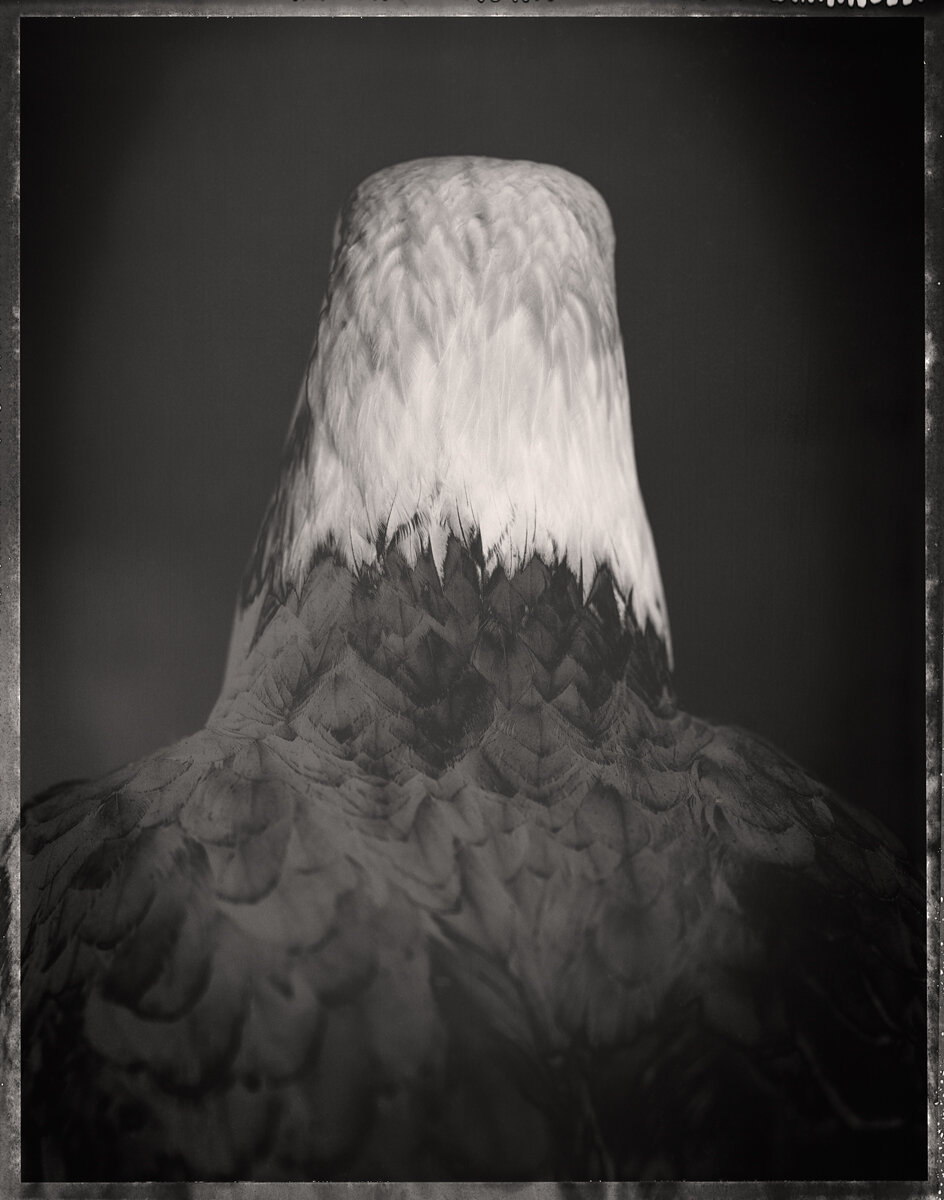
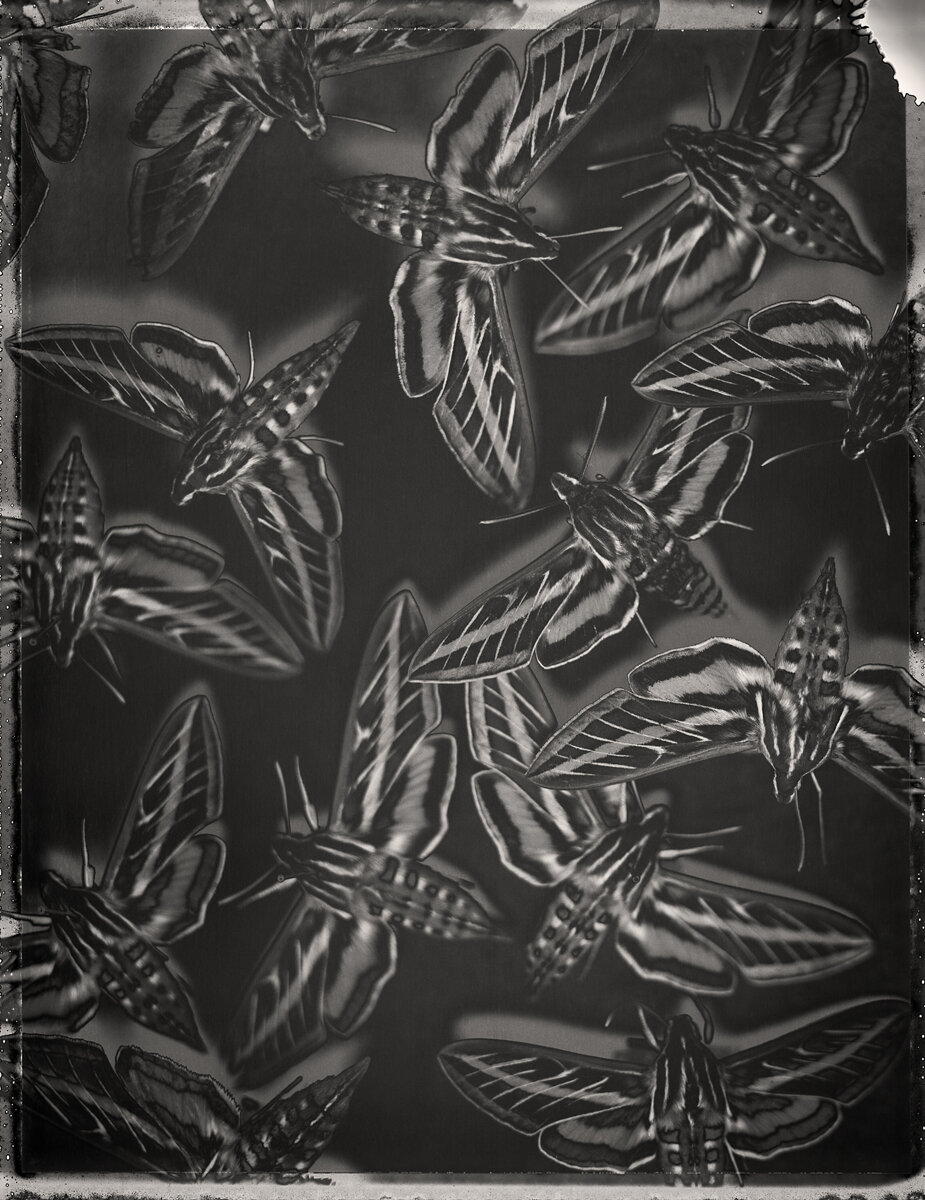
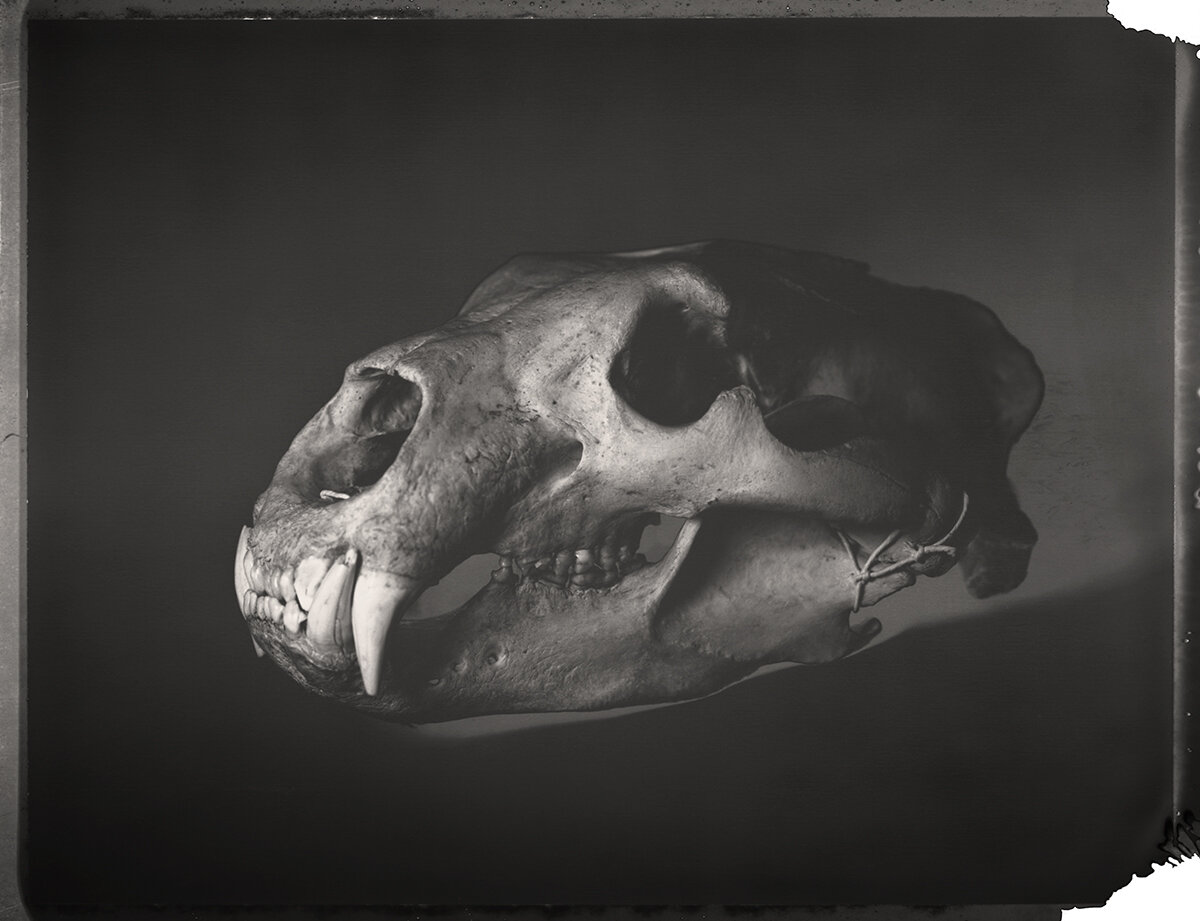
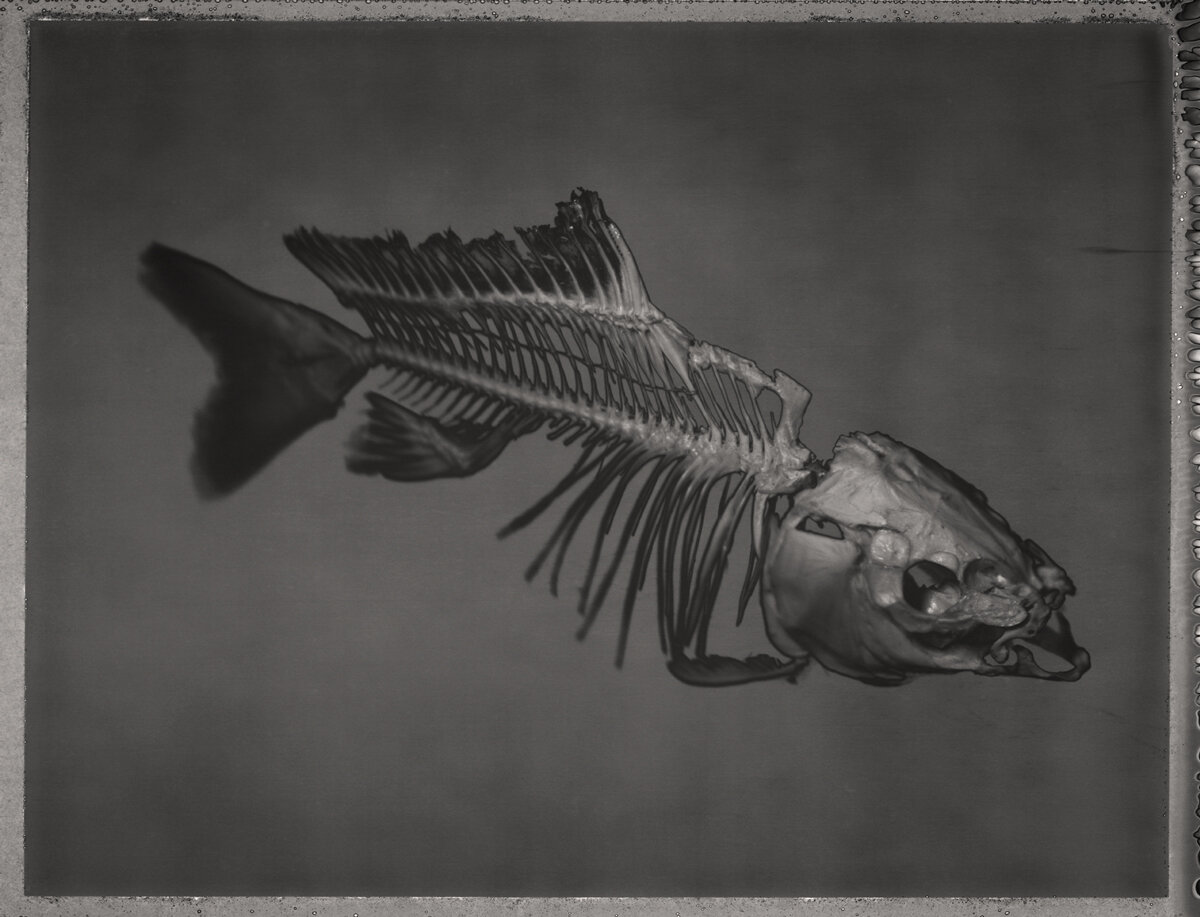
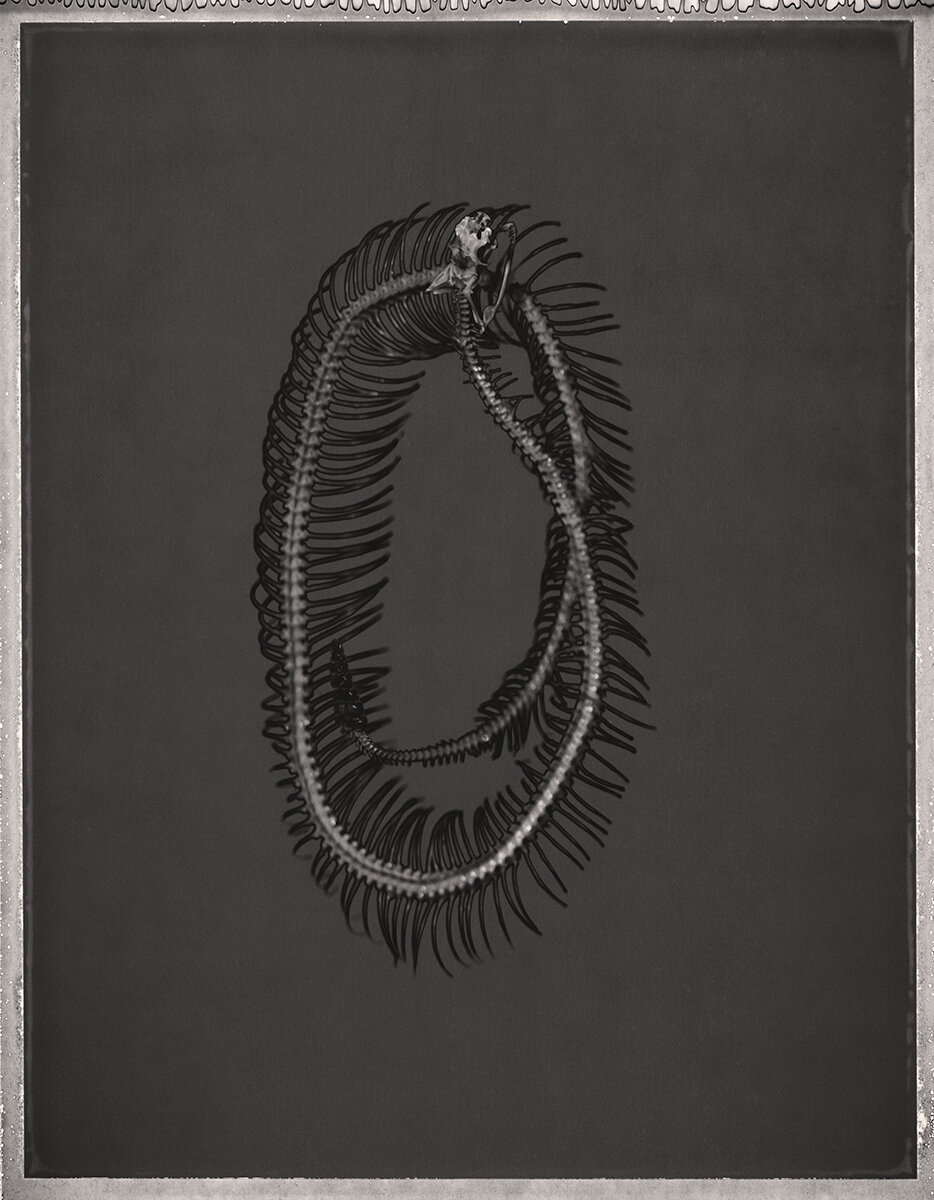
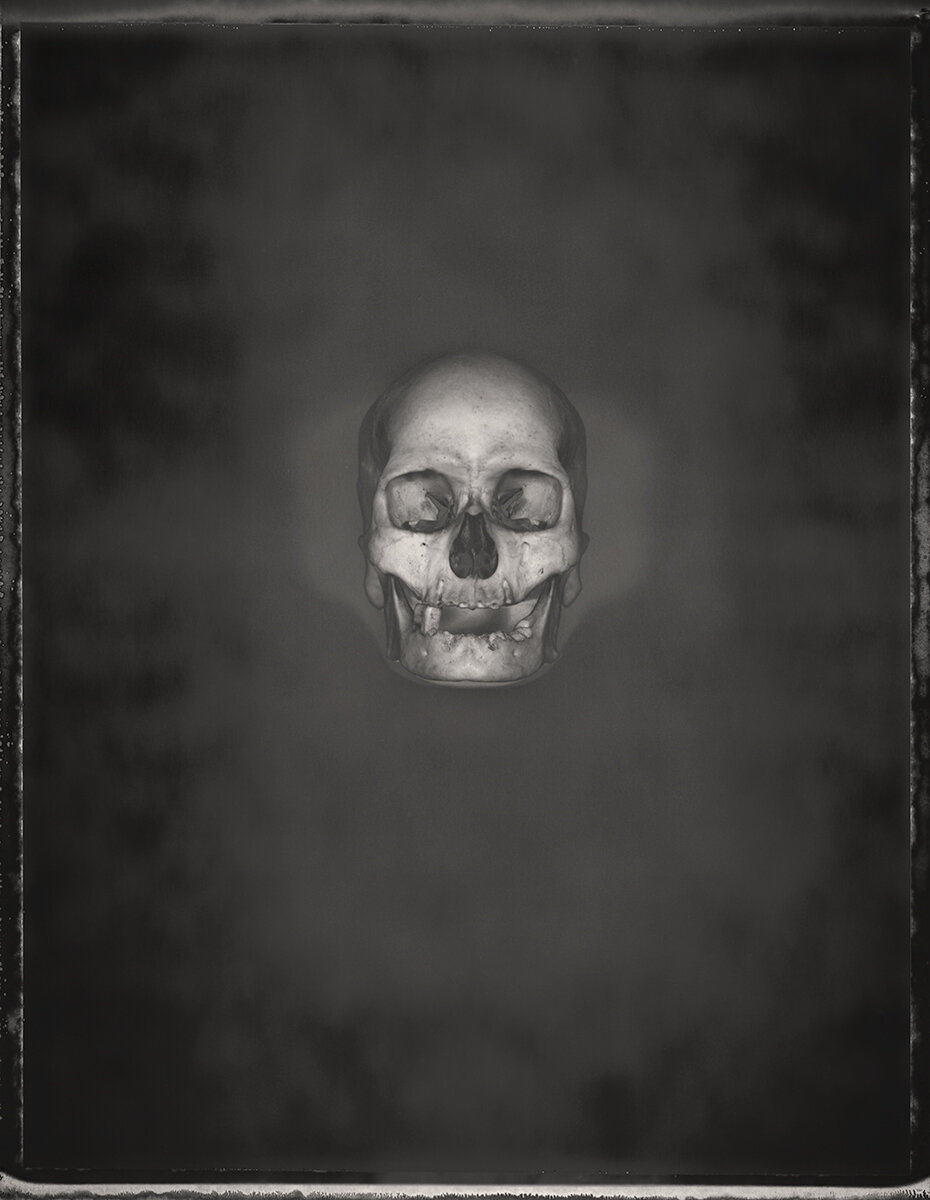
MK: For your work in Solastalgia, you appear in the photographs to represent humanity in a few different forms. Do I have that right? What was the reason for using yourself instead of another model, or other models, throughout the work? Also, what is the idea behind breaking it up into three distinct sections of the overall body of work?
DE: Yes, you have it right.
I also felt the use of my own body insured what I see as ”personal responsibility” within the work. This 10-year series has been motivated by my emotional responses to the destruction of the natural world, literally a reflection of those terms we now see coming into wider use; eco-anxiety and solastalgia. This project was really a way for me to use photography to process what I was witnessing, my own participation in it, and the cognitive dissonance that results.
In addition, I made the connection that I physically represent the dominant demographic group that has held the reins of power in our culture for a very long time, that of the white male. In my mind, it is hard to argue that this particular group, through the decisions they have made, has had an outsized influence and made rather a mess of things environmentally.
The three sections were not planned as a single project from the beginning. Each was originally its own entity. All of my projects are based on a carefully considered starting point but materialize through the creative process. It became clear that these three should be housed together as I began the third project, Absent Presence.
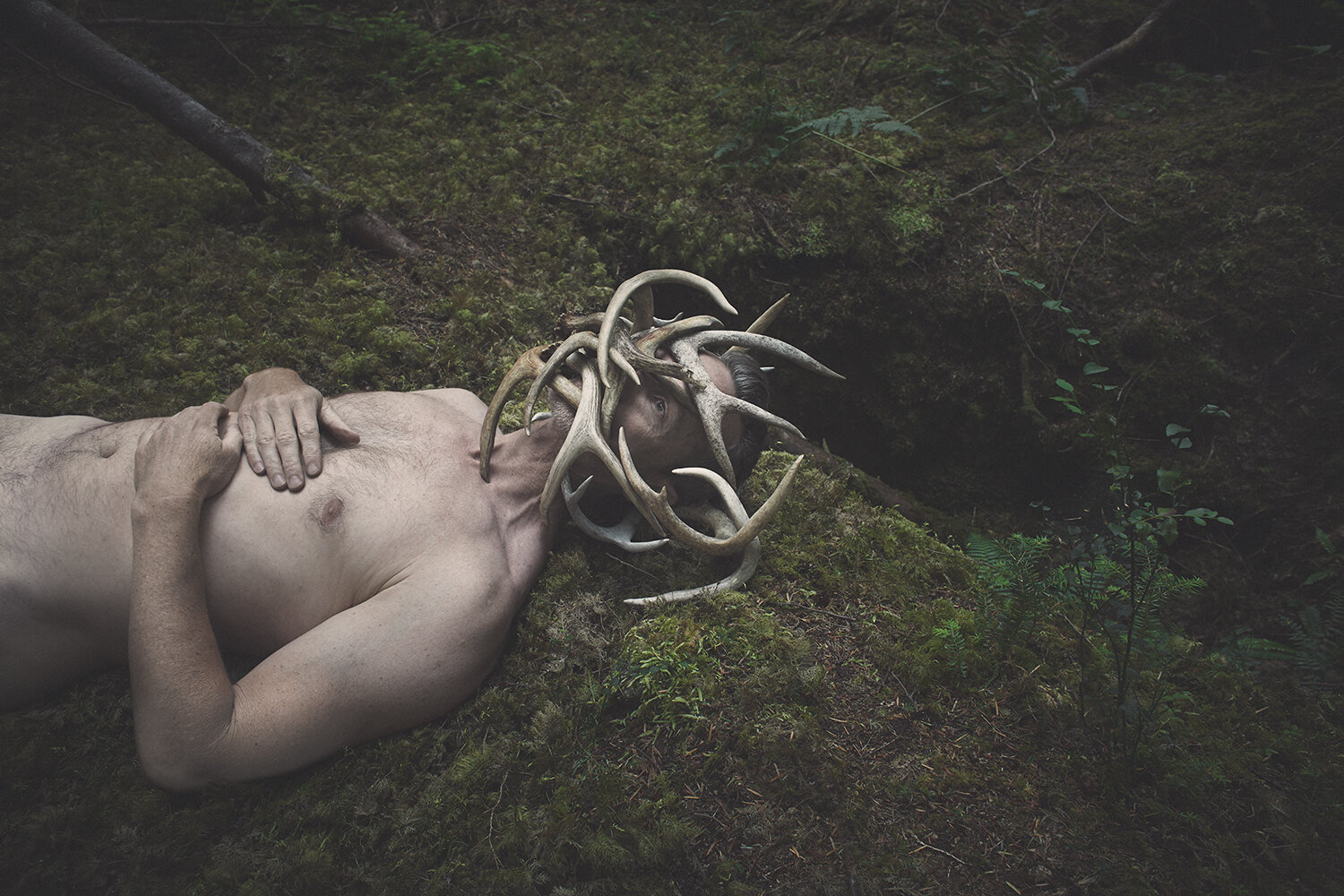
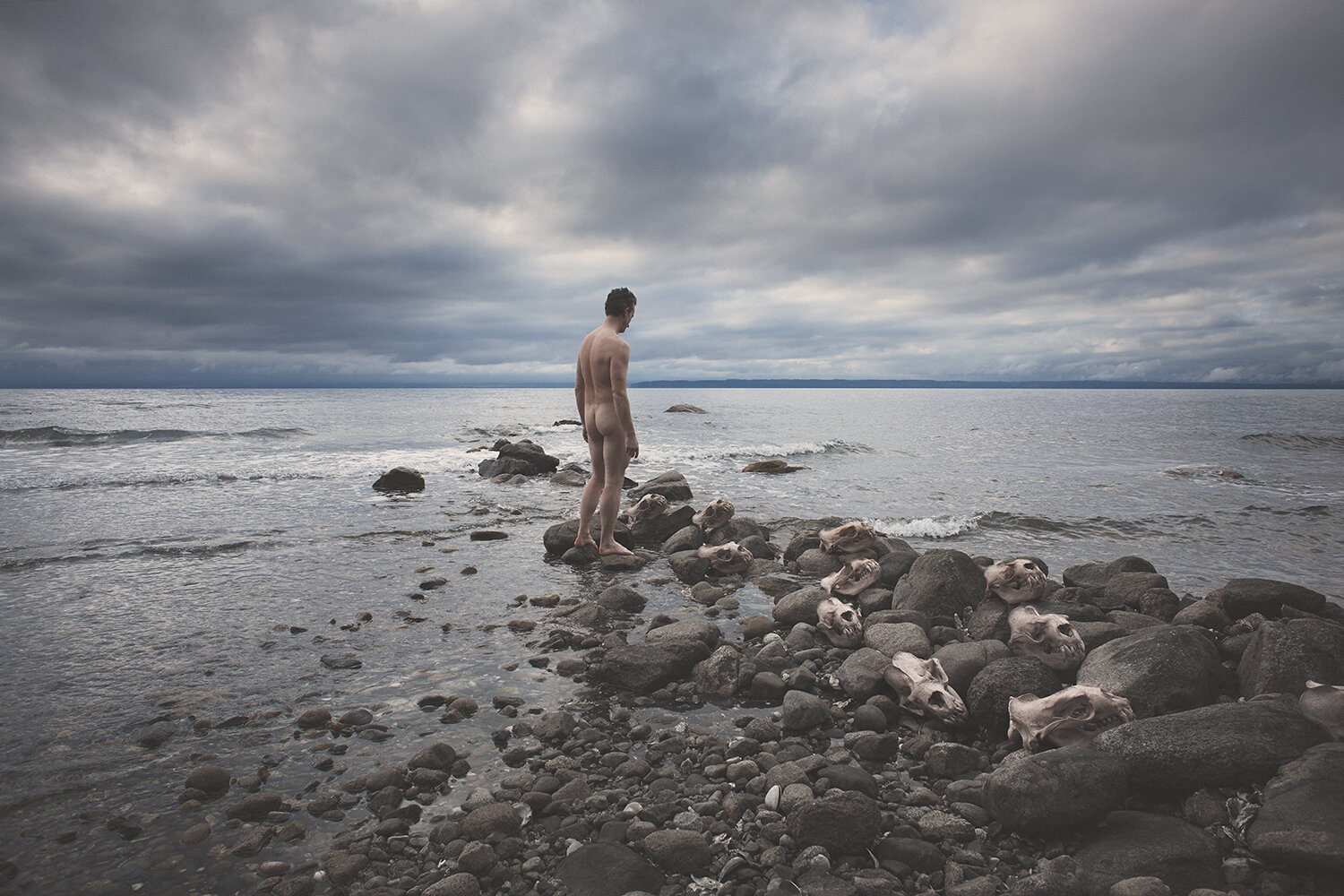
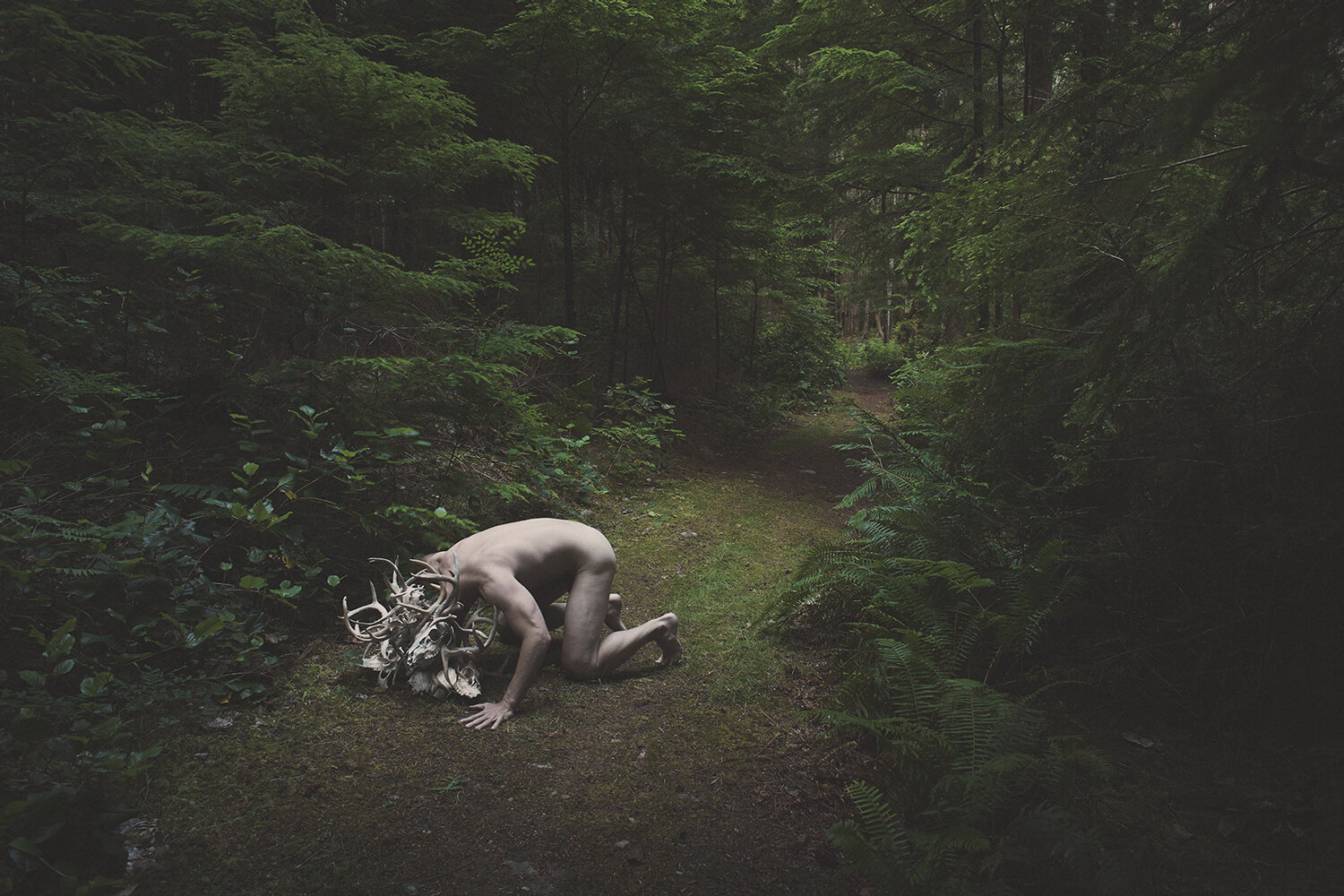
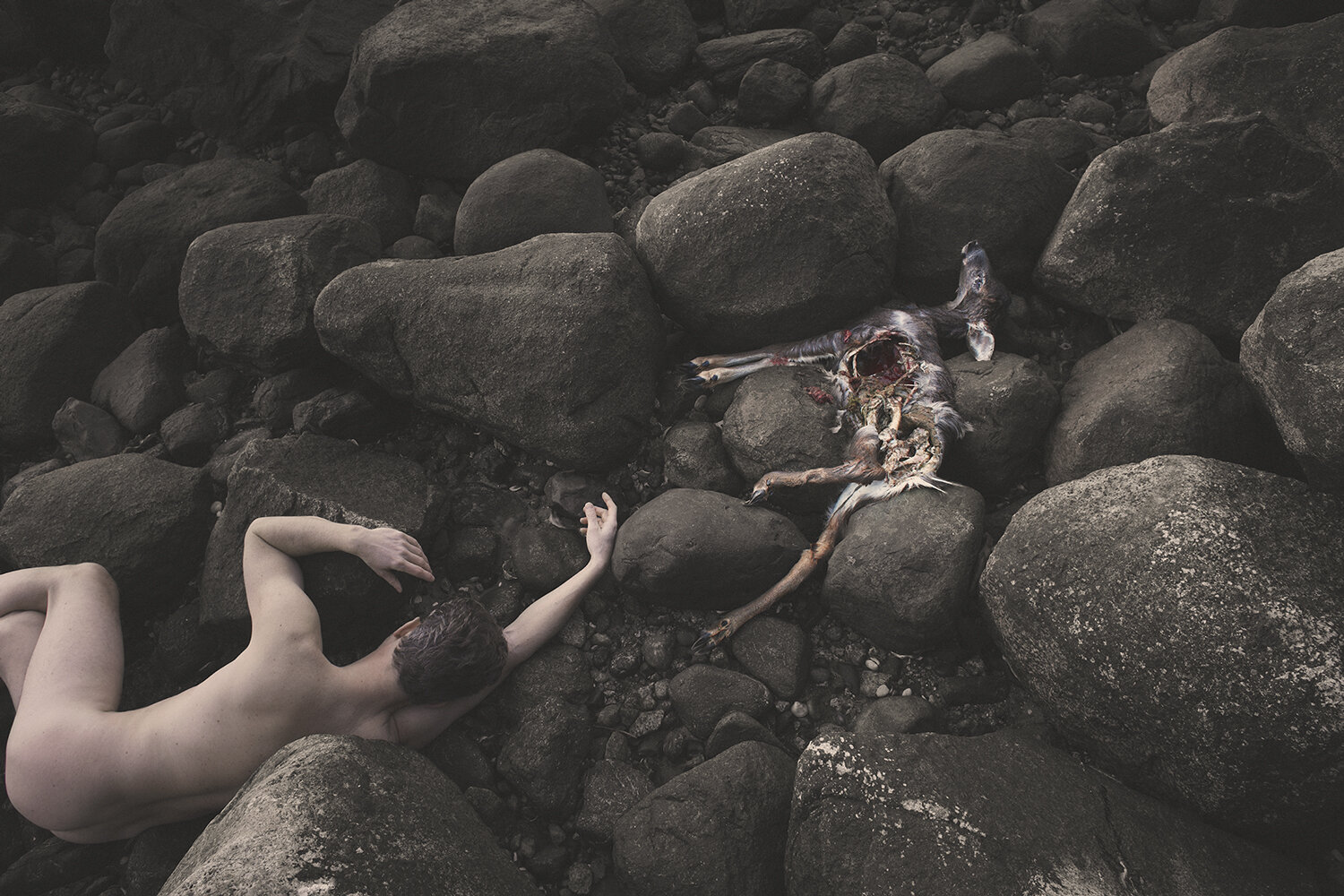
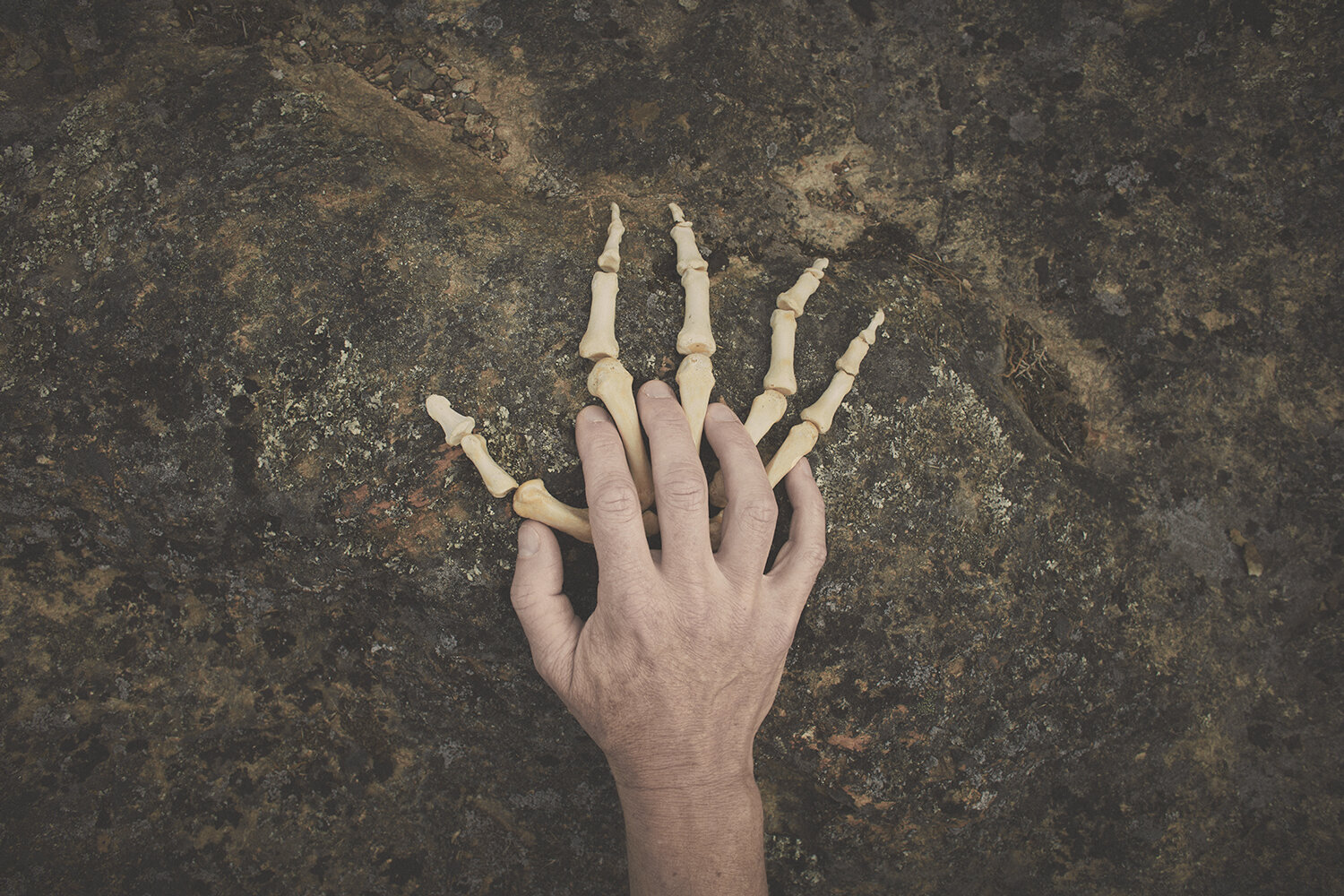
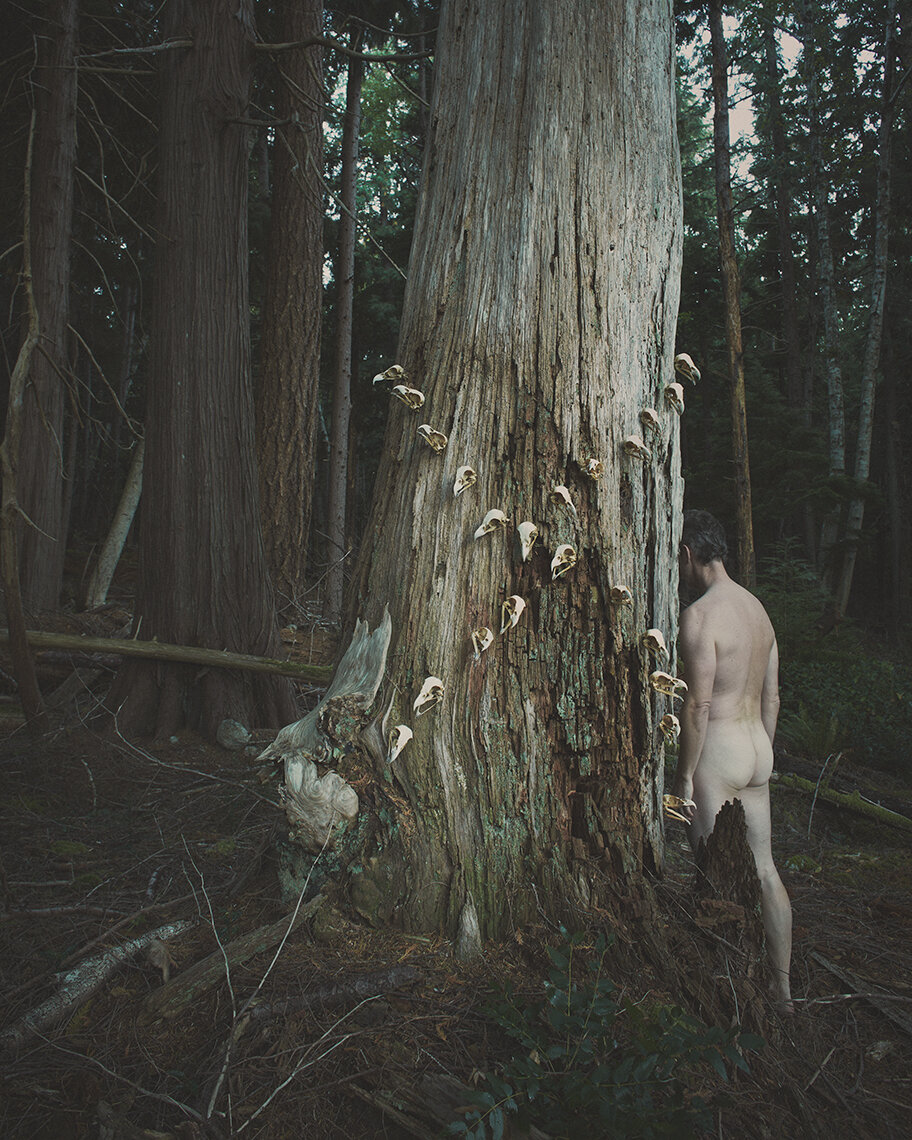
MK: I'm particularly drawn to your collection, The Last Stand. Seeing these monolithic stumps emerge from the forest as it continues to take over and reclaim what was destroyed in the past is quite beautiful in many ways. But it's also in part because of the connection to family and your childhood that seems to personalize it so much. How did that come into play in the creation of this work?
DE: Yes, as a child I literally used to walk by dozens of these stumps every day on my way to and from school, and this is perhaps the best reflection of my earlier comment about how much the land where I was raised informs my work. I made a decision early on to remain close to this area to make my work. This gives me a deeper connection to the photographs – I know the trees, the land, the waters, the plants, the animals, and consequently I notice the disruptions fast and slow that are being imposed upon it by our human activity.
While not as blatant as The Last Stand, all my projects have elements of this personal connection to this part of the world. And, while I make place-based work, the issues we are dealing with here are in BC are sadly reflected globally so it’s not a stretch for most viewers to connect wherever they may be.
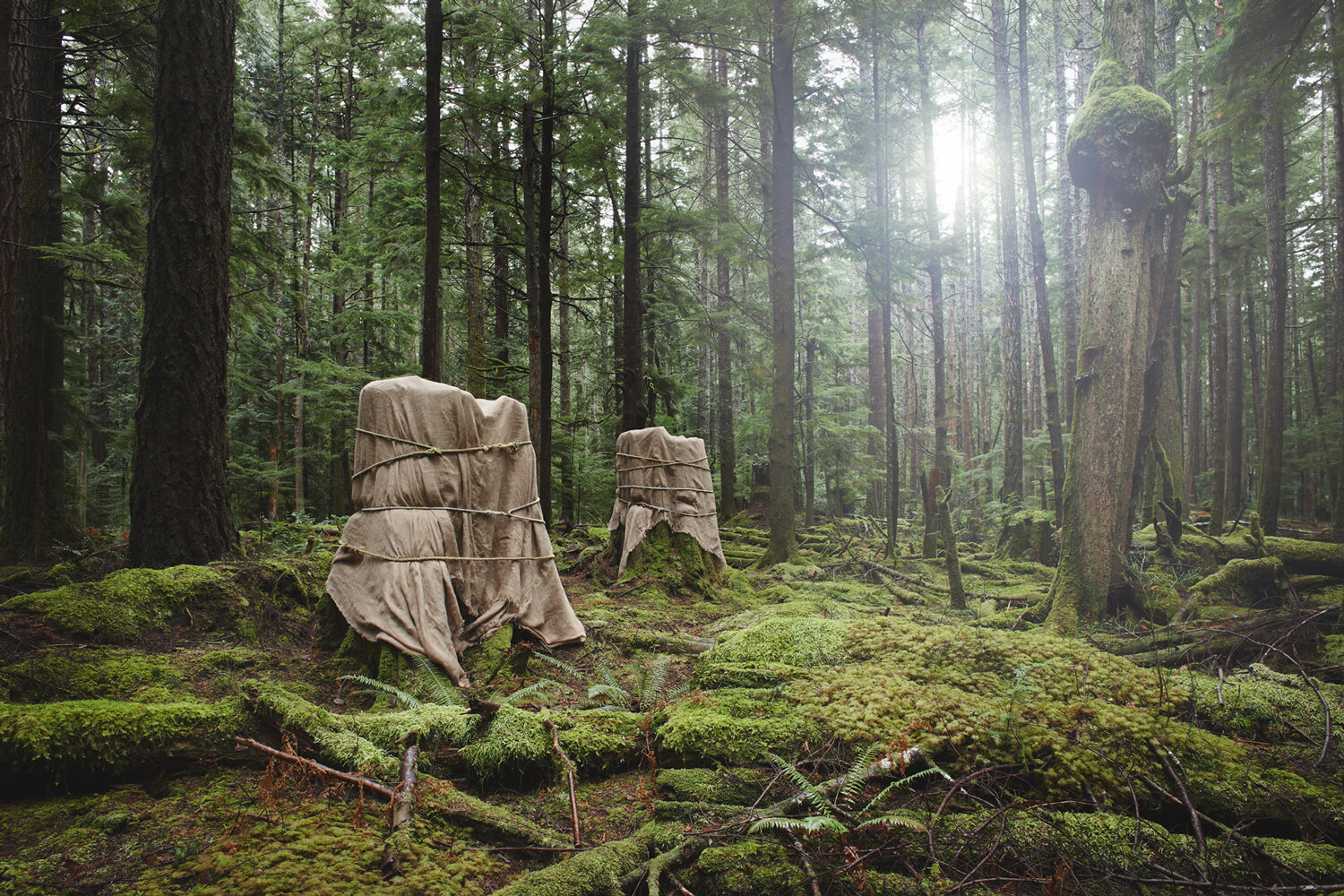
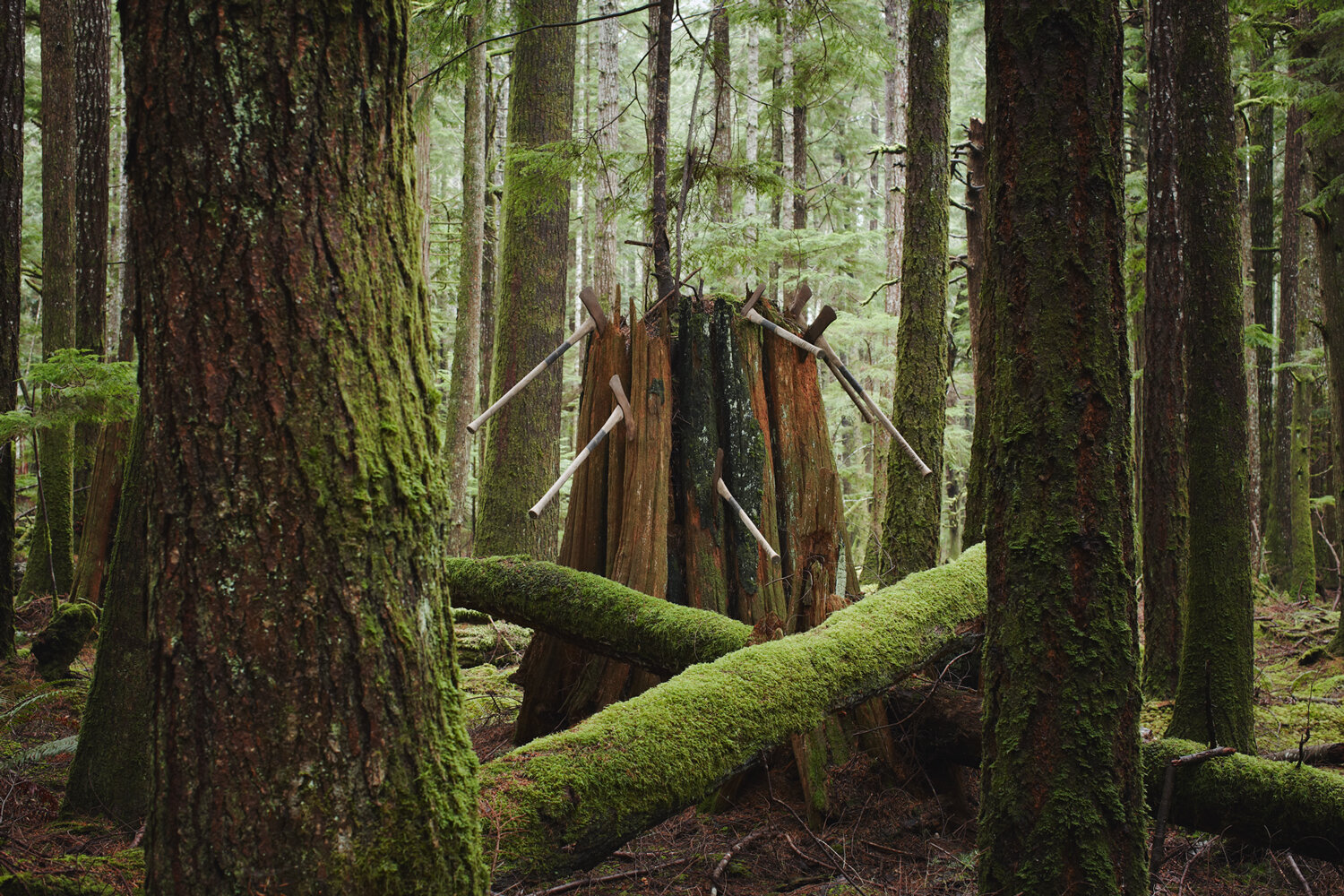
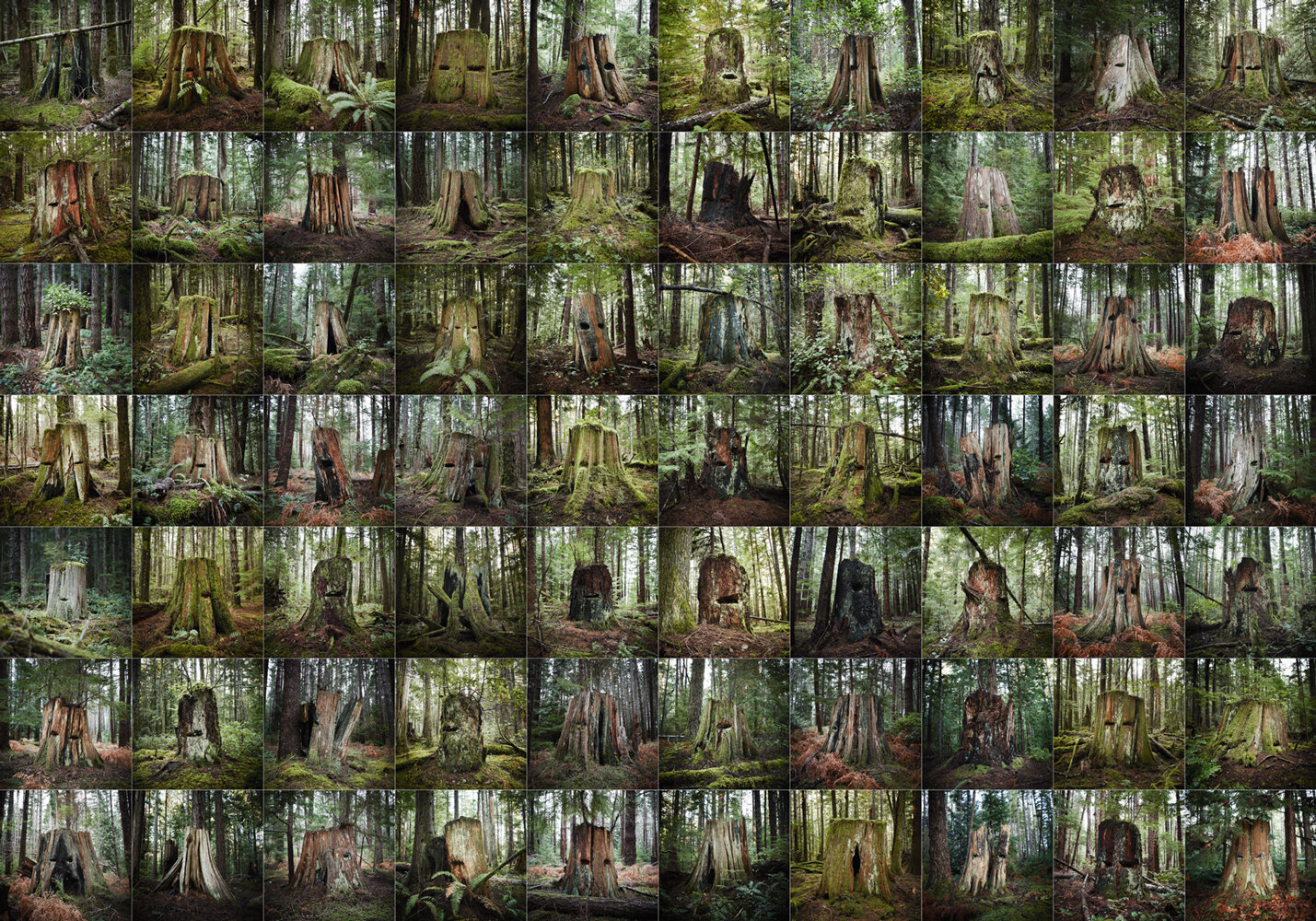
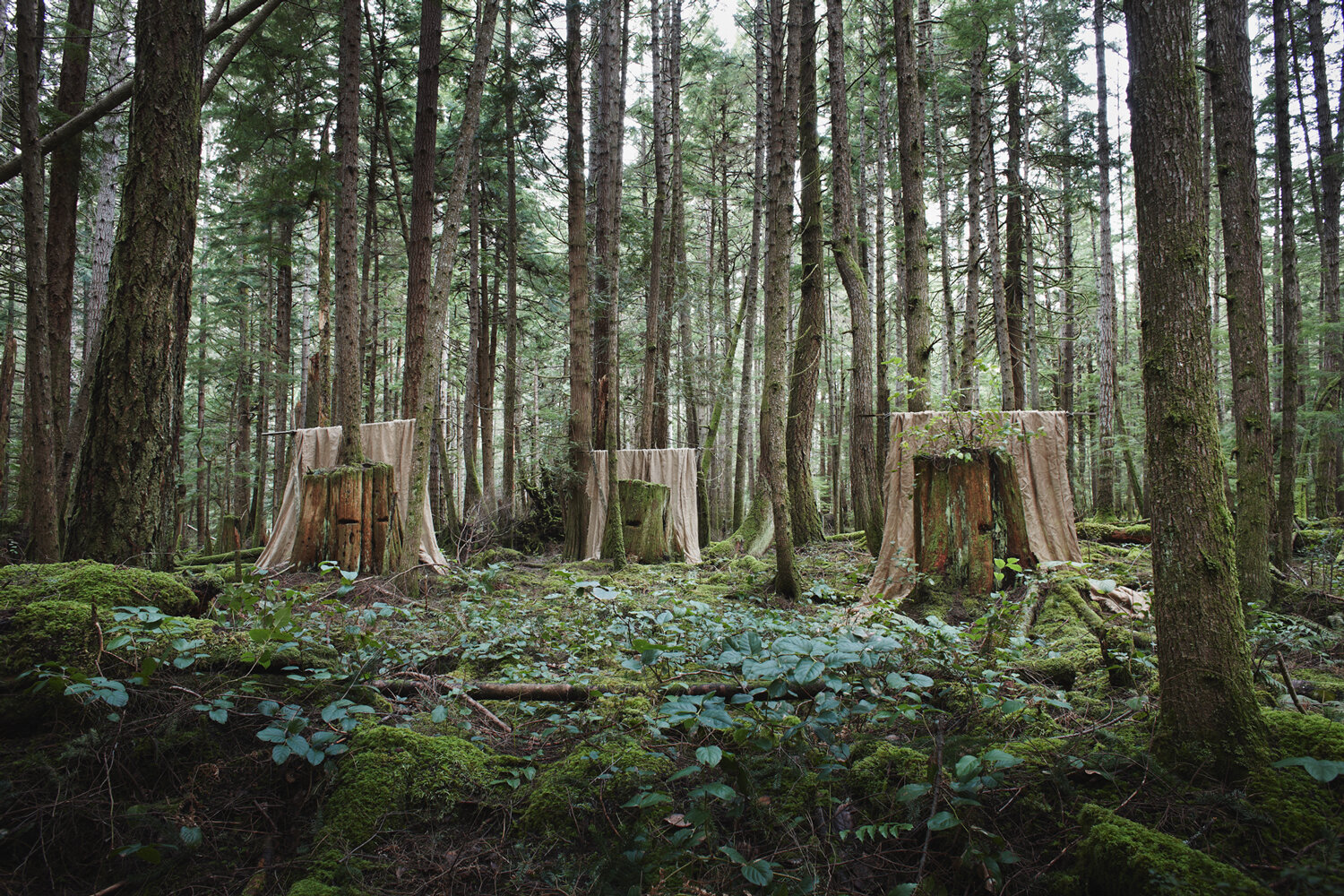
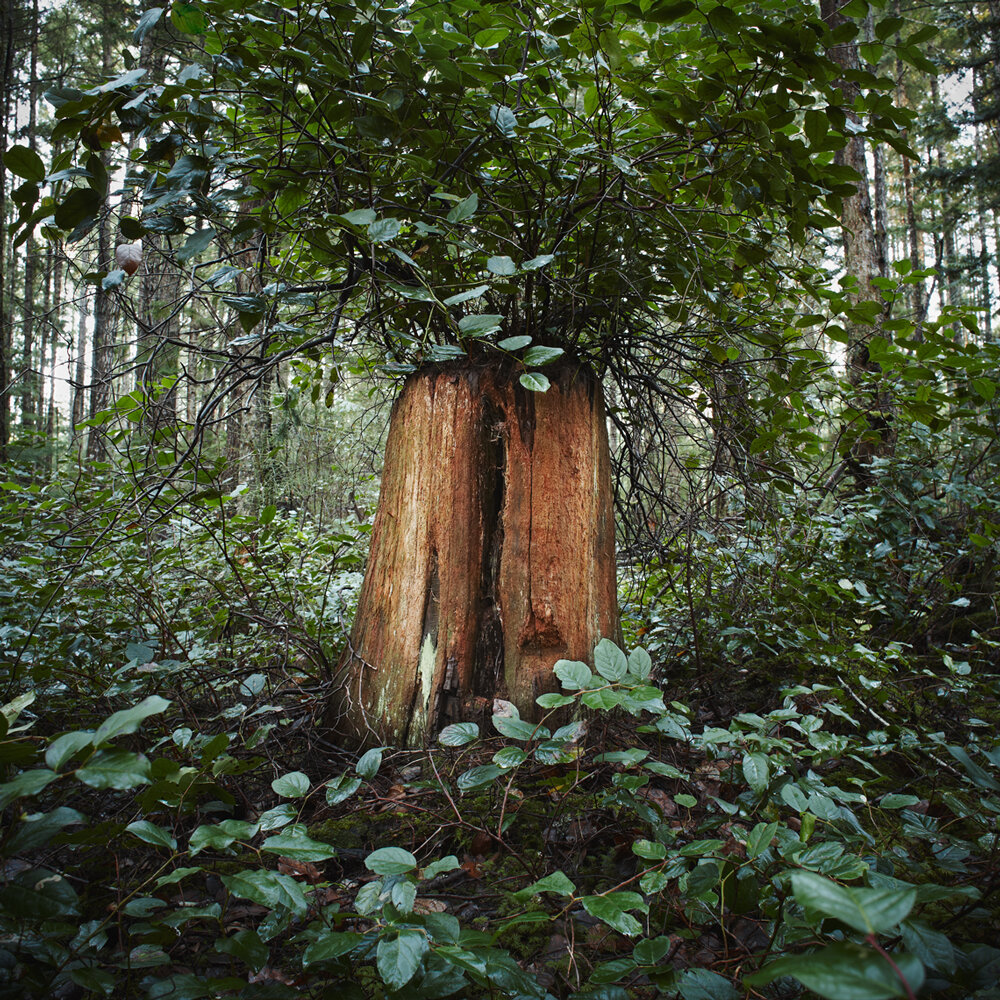
MK: In what appears to be your most grand undertaking, Weather Patterns is an immense and continuously growing body of work. Did you originally intend for this to happen, or was it something that happened organically as you continued to document not just the scenes but the unfortunate records that keep breaking from the ever-changing and degrading climate? I also must say that this particular collection hits home even more now as we currently watch and experience (at the time of this writing - June/July 2021) very severe temperature elevation in the Pacific Northwest of the U.S. and up into British Columbia.
DE: I simply felt that there was something going on that I should be recording in some way, a conscientious witness if you will. New climate records now come to pass with incredible frequency, but they are lost in the busyness of our lives. Humans frankly seem to be terrible at noticing incremental change – and worse at addressing it, even after 50 years of widely published research from the scientific community.
When I began I was not even sure how it would materialize, I just started shooting. With the constant cascade of new milestones, it did not take long for me to realize that this was going to be a major undertaking if I wanted to really make a strong body of work. I settled in for the long haul. It’s only now after 10 years of shooting daily for this project that I feel it’s really got something to say.
It’s a rather overwhelming project in pretty much every way - in its construction, the number of works, the detail and scale of the prints, and so on - but in my opinion, replicates the situation we find ourselves in.
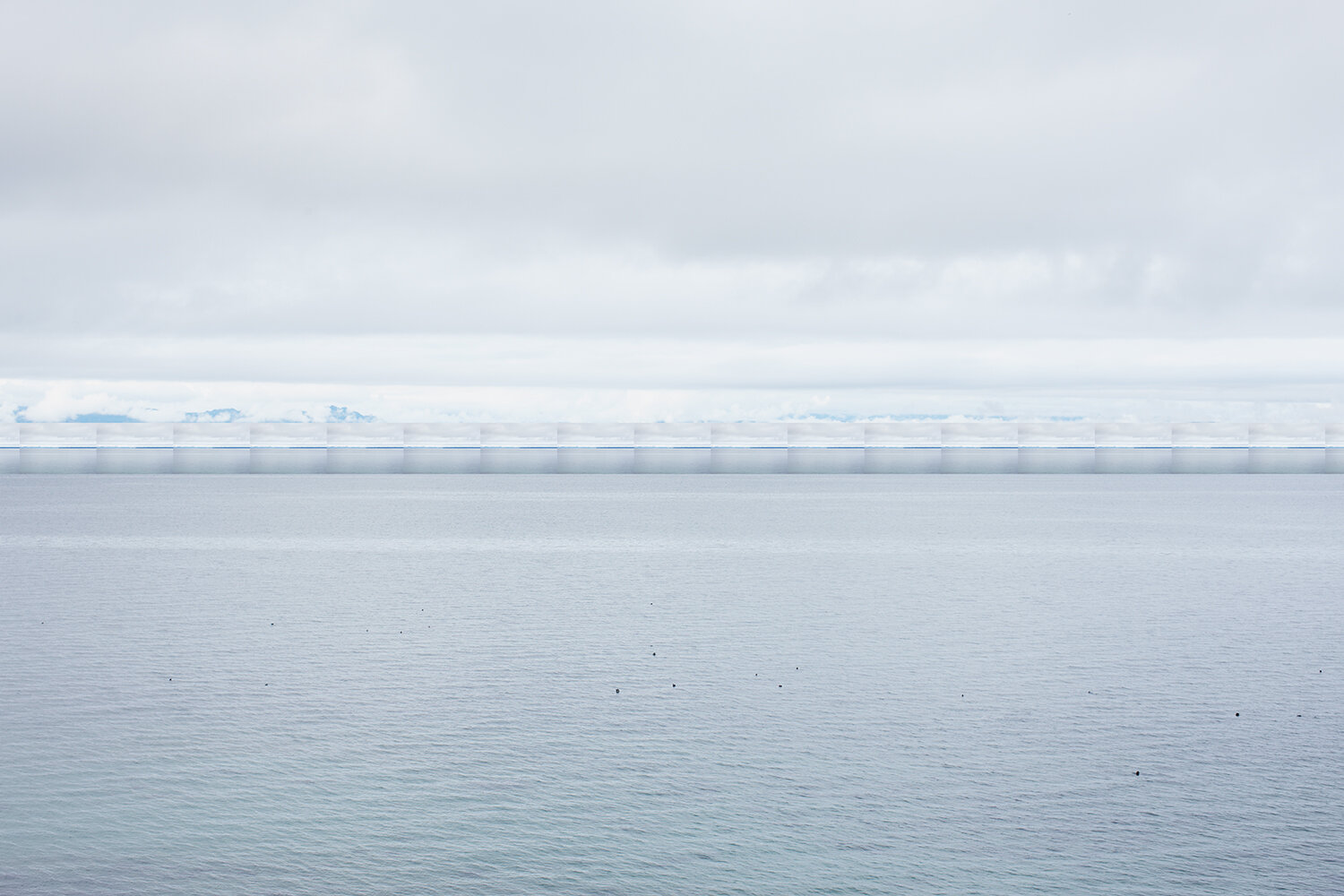

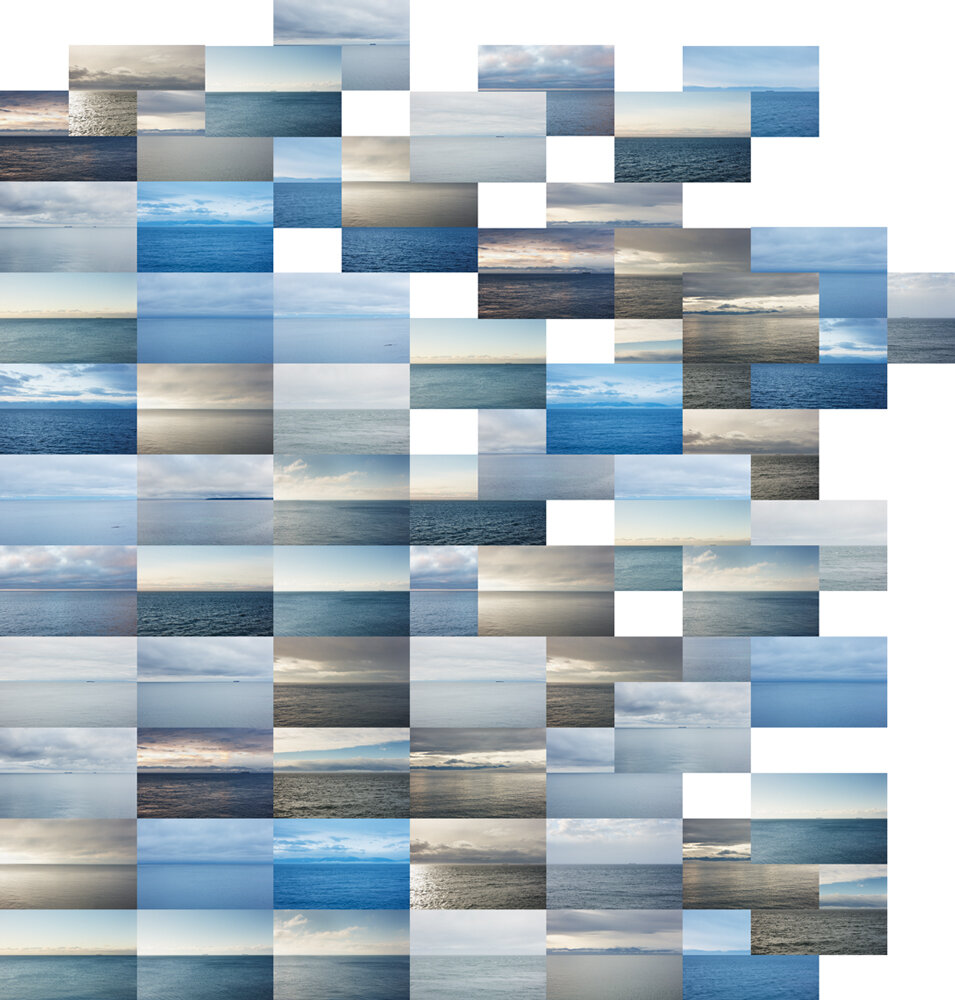

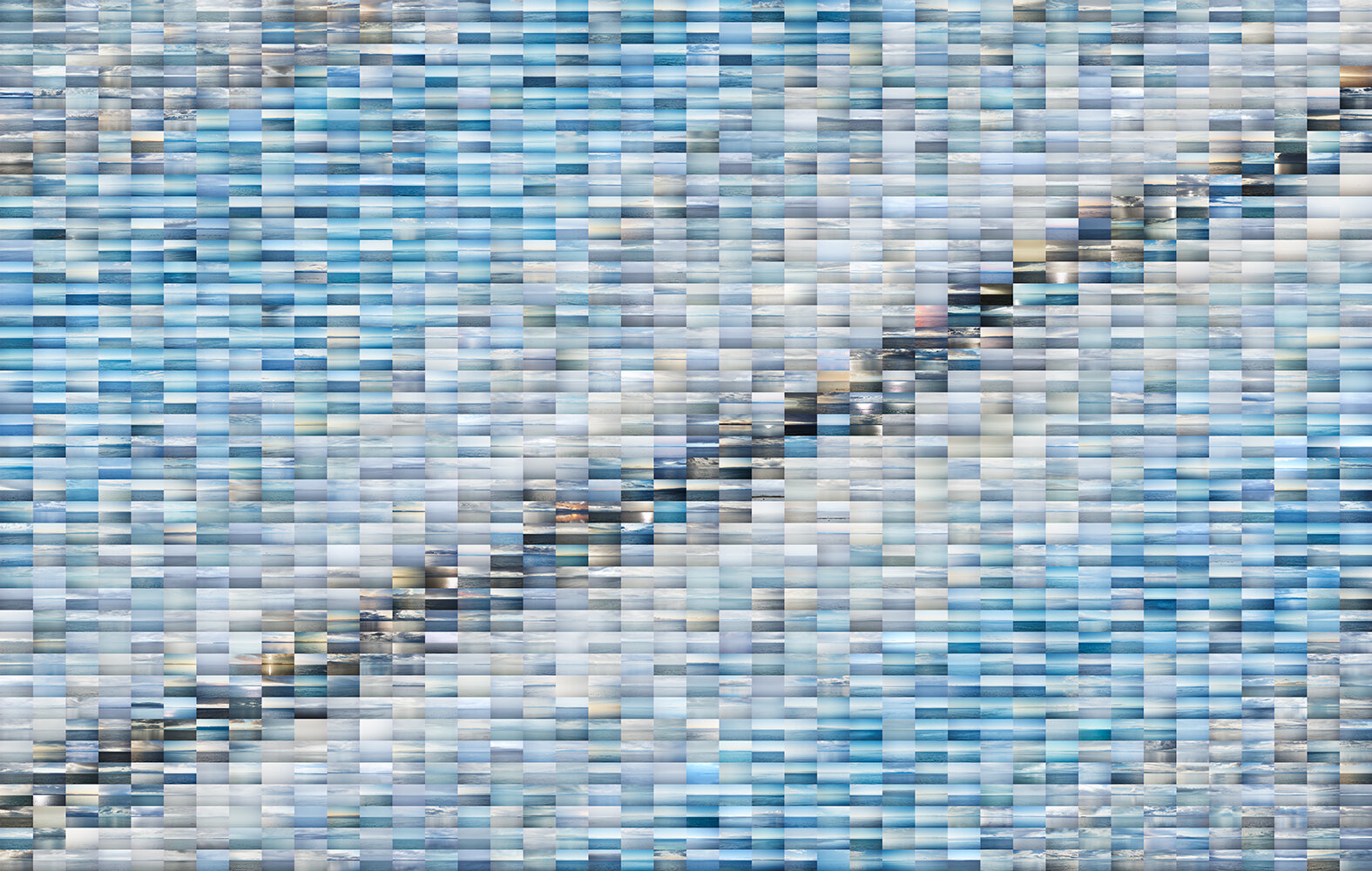
MK: Occasionally constructing images from a grid of many in the collections The Last Stand and Weather Patterns seems to elevate and illustrate time with the scenes and events we are witnessing. Was this always a conscious choice to do so for either body of work? Are your final prints then on a much grander scale as well?
DE: Yes, it was conscious. Mostly in an attempt to illustrate scale (the grids for The Last Stand speaking to the sheer scale, or numbers, of trees cut) and the passage of time (the slow progressions of climate breakdown compressed into Weather Patterns). I make several different edition sizes of my photographs - but the larger ones are what I prefer to show if given the opportunity.
MK: How do you know if you're ever really done with a specific body of work? Do you ever go back to revisit images or collections to improve upon what you felt was previously finished?
DE: It’s almost like the project itself decides. I create the photographs, and always more than I need. I edit and write at the same time as I sort the project out. Then, if I’m not feeling certain about its release out into the world I sit on it for awhile until I figure out how to finish.
MK: Through all of your documentation and observations surrounding climate change and the environment, do you see there being any viable way to change people's minds and attitudes to make a concerted effort to improve things? Could you give us some resources (and links) to help educate us on creating positive change?
DE: At this point the only hope is political. The majority of us want concrete action on the climate crisis and it has become so blatantly obvious that those few who still deny it now just appear foolish. There are smart, logical solutions ready to go from the best and brightest among us. The last step is for ALL concerned citizens to take action and communicate directly with their political representatives – overwhelm them with our urgency - so there is no other path open to them.
A few resources spring to mind…
A constant flow of the latest environmental news from around the globe filtered through The Guardian’s unmatched independent journalism and commitment to telling the truth about the crisis. My top source for new project ideas, research leads, and staying current.
NOAA National Centers for Environmental Information
Keeping up with the deluge of new climate records being set, the NOAA is the "confirmation of data" source for my Weather Patterns project, now in its tenth year. The sheer volume of new high-temperature recordings in the unending, upward trajectory of the planet’s climate makes for a rather bracing read. A wealth of information.
Braiding Sweetgrass by Robin Wall Kimmerer
Kimmerer deftly examines the tools of science and the gifts of the natural world through the wisdom of indigenous culture. This book not only offers an urgently needed path towards the healing of human relationship with nature but also between settler and indigenous cultures. Everyone needs to read this one.
A great resource but even more importantly visit and act at https://call4climate.com A great tool for my friends in the US.
A brilliant gang in the UK looking clearly into the reality of our situation through art and writing. A biannual publication that connects me to others who feel the same about our predicament.
Southern Resident Killer Whale, Orcinus orca, from Projections
MK: I imagine you always have something in the works, David. What might we see next from you? Anything new and exciting coming out?
DE: I’m working on a few projects right now.
The first will expand a small series, called Projections, I made during a recent residency that looks at our extinction crisis here in British Columbia. I used a new process where images of endangered species were projected at dusk onto a suspended netting material sensitized with a reflective emulsion (the netting will completely disappear against a black background). Then a photograph was made of the whole scene. With over 1300 species at risk in the province, I’m hoping to speak to past population numbers, present diminishment, and future projections on what may come again if things turn around.
I have just completed, and am in the pitching process, for Falling Boundaries which is a series following up on The Last Stand. With my immigrant/settler family history intimately connected with the forest as a backdrop, Falling Boundaries explores deforestation in British Columbia over the last century. Blending new imagery with historical I intend to weave together threads of resource extraction and the reverberating effects of colonialism within the deepening environmental crisis.
The third is a secret for now : )
You can find more of David's work on his website here.
*A portion of this interview originally posted on the Traverse column at One Twelve Publishing, May 6, 2021, here.
All photographs, ©David Ellingsen







